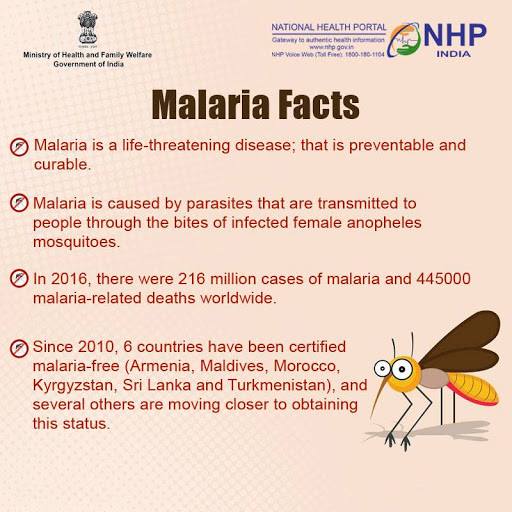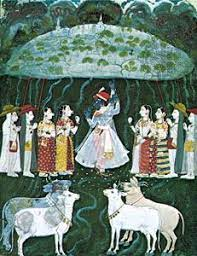CONTENTS
- Malaria
- Measles
- Miniature Painting
- PUSA-44
- Nobel Prize in Literature for 2023
- Asia-Pacific Institute for Broadcasting Development
Malaria
Context:
The World Health Organization (WHO) has endorsed the R21/Matrix-M malaria vaccine, which was jointly developed by the University of Oxford and the Serum Institute of India. This vaccine includes the Matrix-M component, an adjuvant based on saponin developed by Novavax and licensed to the Serum Institute for use in areas where malaria is prevalent. Currently, the vaccine has received licensing for use in Ghana, Nigeria, and Burkina Faso.
Relevance:
GS II: Health
Dimensions of the Article:
- Understanding Adjuvants in Vaccines
- About Malaria
- Government of India Initiatives to Reduce Malaria.
Understanding Adjuvants in Vaccines
- An adjuvant is a component incorporated into vaccines to boost and improve the immune system’s response to the vaccine.
Enhancing Immune Response:
- Adjuvants play a crucial role in helping the immune system recognize vaccine components more effectively.
- They contribute to the immune system’s ability to remember the vaccine’s contents, extending the duration of protection offered by the vaccine.
Matrix-M Adjuvant: A Natural Boost
Derived from Saponins:
- Matrix-M adjuvant is derived from saponins, which are naturally occurring compounds found in the bark of the Quillaja saponaria tree in Chile.
- Saponins have a long history of medicinal use.
Immune System Enhancement:
- Matrix-M adjuvant, based on saponins, enhances the immune response to vaccines, making them more effective.
Prolonged Protection:
- By improving the immune system’s recognition and memory, Matrix-M adjuvant extends the duration of vaccine protection.
About Malaria
- The Malaria is a leading cause of human morbidity and mortality.
- Despite huge progress in tackling the disease, there are still 212 million new cases of malaria and 430,000 malaria-related deaths worldwide each year according to the World Health Organisation (WHO).
- The Malaria is caused by the Plasmodium parasite.
- The parasite can be spread to humans through the bites of infected mosquitoes.
- There are many different types of plasmodium parasite, but only 5 types cause malaria in humans.
- The Children under the age of 5 and pregnant women are most susceptible to the disease.
- The severity of malaria varies based on the species of plasmodium.
- The Symptoms are chills, fever and sweating, usually occurring a few weeks after being bitten.

Government of India Initiatives to Reduce Malaria.
- The India’s progress in fighting malaria is an outcome of concerted efforts to ensure that its malaria programme is country-owned and country-led, even as it is in alignment with globally accepted strategies.
- At the East Asia Summit in 2015, India pledged to eliminate the disease by 2030.
- Following this public declaration, India launched the five-year National Strategic Plan for Malaria Elimination.
- This marked a shift in focus from malaria “control” to “elimination”.
- The plan provides a roadmap to achieve the target of ending malaria in 571 districts out of India’s 678 districts by 2022.
-Source: The Hindu
Measles
Context:
Recently, there has been a significant spike in measles cases and fatalities in Delhi, attributed to under-reporting of cases during the Covid-19 lockdowns in the previous years.
Relevance:
GS II: Health
Dimensions of the Article:
- About Measles
- Initiatives to Combat Measles
About Measles
- Measles or as it is called ‘khasra’, is a highly contagious viral disease which affects mostly children.
- It is one of the leading causes of death and disability among young children.
- There is no specific treatment for measles but there is a vaccine to stay protected from the disease, which is both safe as well as cost effective.
- Death due to measles are caused by the complications associated with the disease like blindness, encephalitis, severe diarrhoea and pneumonia.
Spread:
- Measles spreads by coughing and sneezing, close personal contact or direct contact with infected nasal or throat secretions.
- As per reports, an infected child with measles can spread the virus to others for about eight days, starting four days before the rash appears and ending when the rash has been present for four days.
What are the symptoms?
- Symptoms appear around 10 to 14 days after exposure to the virus.
- The main symptoms are fever, dry cough, running nose, sore throat and rash.
- The rashes look like small red spots which remain slightly raised and give the skin a splotchy red appearance.
- The face of the rash breaks out first. Within days, it spreads to the rest of the body.
Initiatives to Combat Measles
Measles & Rubella Initiative (M&R Initiative):
- Launch: Established in 2001.
- Leading Partners: Led by organizations such as the American Red Cross, United Nations Foundation, CDC, UNICEF, and WHO.
- Objective: Dedicated to preventing child deaths from measles and congenital rubella syndrome. It supports countries in planning, funding, and assessing efforts to eliminate measles and rubella.
Measles-Rubella (MR) Vaccination:
- Target: Aims to vaccinate approximately 410 million children in India.
- Age Group: Covers all children aged 9 months to less than 15 years.
- Vaccine: Administers a single Measles-Rubella (MR) vaccination regardless of previous vaccination or disease status.
Universal Immunization Programme (UIP):
- Objective: Part of India’s broader vaccination efforts, UIP focuses on ensuring universal immunization, including vaccines against measles, to protect children from vaccine-preventable diseases.
Mission Indradhanush:
- Objective: Launched to intensify efforts to expand immunization coverage in areas with low vaccination rates. It aims to reach unreached children and pregnant women with necessary vaccinations.
Intensified Mission Indradhanush:
- Objective: Building on Mission Indradhanush, this initiative aims to accelerate immunization coverage and reach underserved and vulnerable populations, particularly in urban areas and tribal regions.
-Source: The Hindu
Miniature Painting
Context:
Allah Baksh, a Mewari miniature painter late 17th century, portrayed the Interpretation of Mahabharata in his Painting and is known for his intricate and delightful representation.
Relevance:
GS I: History
Dimensions of the Article:
- Allah Baksh: Court Painter of Maharaja Jai Singh
- Mewari Style Miniature Painting
- Miniature Painting
Allah Baksh: Court Painter of Maharaja Jai Singh
- Allah Baksh served as a court painter in the late 17th century and was employed by Maharaja Jai Singh of Udaipur.
- Paintings and Portrayal by Allah Baksh
- Allah Baksh was known for his meticulous attention to detail in his paintings.
- His artworks showcased intricate details of characters’ costumes, the surrounding flora and fauna, and depicted magical and mystical events.
- His miniature paintings beautifully represented episodes from the Mahabharata, offering a harmonious blend of the poet’s and painter’s imaginative worlds.
Mewari Style Miniature Painting:
Mewār Painting
- Mewār painting is a significant school of Indian miniature painting that flourished during the 17th and 18th centuries.
- It belongs to the broader Rājasthanī style and emerged in the Hindu principality of Mewār, located in the state of Rājasthān, India.
Characteristics of Mewari Style Miniature Painting:
- This school of painting is highly refined and known for its intricate detailing, vibrant color palette, and meticulous craftsmanship.
- The paintings from Mewār are marked by their simplicity, bright colors, and direct emotional appeal.
- Notably, many paintings from this school have well-documented dates and origins, providing valuable insights into the development of Mewār painting.
- A renowned painter associated with Mewār painting is Sahibdin, who is famous for his work on the Ragamala in 1628.

Miniature Painting:
- Miniature paintings are small, handcrafted artworks known for their intricate brushwork and vibrant colors.
- They are characterized by their small size and are often created on perishable materials like paper, palm leaves, and cloth.
- Natural sources, including vegetables, indigo, precious stones, gold, and silver, are used to create the colors for these paintings.
Origins and Pioneers
The Palas of Bengal are credited as pioneers of miniature painting in India.
Schools of Miniature Painting in India
- Pala School:
- Emerged in the 8th century A.D.
- Emphasized the symbolic use of colors and often depicted themes from Buddhist tantric rituals.
- Jain School:
- Gained prominence in the 11th century A.D.
- Portrayed religious texts like the ‘Kalpa Sutra’ and ‘Kalkacharya Katha’ through miniature paintings.
- Mughal School:
- Resulted from the fusion of Indian and Persian miniature painting traditions.
- Persian miniature paintings were influenced by Chinese art.
- Rajasthani School:
- Flourished after the decline of Mughal miniature painting.
- Comprises various regional schools, including Mewar, Marwar, Hadoti, Dhundar, Kangra, and Kullu, each with its unique style.
- Pahari School:
- Emerged in the 17th century A.D. in the Himalayan region of North India.
- Known for its distinctive style and portrayal of regional themes.
- Deccan School:
- Flourished from the 16th to the 19th century A.D. in Deccan regions like Ahmednagar, Golconda, Tanjore, Hyderabad, and Bijapur.
- Influenced by Deccan traditions and religious beliefs from Turkey, Persia, and Iran.
-Source: Indian Express
PUSA-44
Context:
Recently, Punjab Chief Minister announced that the state will ban the cultivation of the PUSA-44 paddy variety from next year onwards.
Relevance:
GS III: Agriculture
Dimensions of the Article:
- PUSA-44: A Paddy Variety with Implications
- Key Facts about the Indian Council of Agricultural Research (ICAR)
PUSA-44: A Paddy Variety with Implications
Development: PUSA-44 is a paddy variety that was developed in 1993 by the Indian Council of Agricultural Research (ICAR).
Widespread Adoption:
- By the end of the 2010s, PUSA-44 had gained immense popularity among farmers in Punjab, covering a substantial portion, approximately 70 to 80%, of the paddy cultivation area.
- Farmers have reported significantly higher yields with PUSA-44, producing nearly 85 to 100 quintals per acre, compared to the average yield of 28 to 30 quintals per acre with other varieties.
Concerns Surrounding PUSA-44:
- Longer Duration: PUSA-44 is a long-duration paddy variety, taking around 160 days to mature, which is 35 to 40 days longer than other varieties. This extended growth period necessitates 5-6 additional cycles of irrigation.
- Groundwater Depletion: Given Punjab’s severe groundwater depletion issue, the government aims to conserve one month of irrigation water by banning this variety.
- Stubble Burning: PUSA-44 exacerbates the problem of stubble burning in the state. It generates approximately 2% more stubble than shorter-duration varieties, posing a significant environmental concern when cultivated on a large scale.
Key Facts about the Indian Council of Agricultural Research (ICAR)
- Autonomous Organization: ICAR is an autonomous organization operating under the Department of Agricultural Research and Education (DARE), Ministry of Agriculture and Farmers Welfare, Government of India.
- Former Name: ICAR was formerly known as the Imperial Council of Agricultural Research.
- Establishment: It was established on 16 July 1929 as a registered society under the Societies Registration Act, 1860. Its establishment was in response to the recommendations of the Royal Commission on Agriculture.
- Apex Body: ICAR serves as the apex body responsible for coordinating, guiding, and managing research and education in various fields of agriculture, including horticulture, fisheries, and animal sciences, across India.
- National Agricultural System: ICAR oversees a vast network of agricultural institutions, including 113 ICAR institutes and 71 agricultural universities, making it one of the largest national agricultural systems globally.
- Headquarters: The headquarters of ICAR is located in New Delhi, India.
-Source: Indian Express
Nobel Prize in Literature for 2023
Context:
Recently, the Nobel Prize in Literature for 2023 was awarded to Jon Fosse “for his innovative plays and prose which give voice to the unsayable.”

Relevance:
Facts for Prelims
Jon Fosse: Celebrated Norwegian Author and Dramatist
- Background: Jon Fosse is a Norwegian author and playwright known for his distinctive writing style and contributions to contemporary literature and drama.
- Language Choice: Fosse writes in Norwegian Nynorsk, which is one of the two official versions of the Norwegian language. It is less commonly used than Bokmål, the other official version.
- Fosse Minimalism: He is celebrated for his unique writing style often referred to as “Fosse minimalism.” This style is characterized by its simplicity, minimalism, and intense dialogue, drawing comparisons to literary giants like Samuel Beckett and Harold Pinter, both of whom have been Nobel laureates in Literature.
- Themes in His Works:
- Fosse’s works delve into themes related to the human condition, including its absurdity, futility, and inherent power.
- He explores everyday confusions, unresolved issues, and the complexities of forming genuine human connections.
Notable Works:
- Jon Fosse has a significant body of work, including plays, novels, and poetry.
- Some of his notable works include “A New Name: Septology VI-VII,” “I Am the Wind,” “Melancholy,” “Boathouse,” and “The Dead Dogs.”
-Source: Indian Express
Asia-Pacific Institute for Broadcasting Development
Context:
India has been elected president of the Asia-Pacific Institute for Broadcasting Development (AIBD) General Conference (GC) for the third successive term.
Relevance:
GS II: International Relations
Asia-Pacific Institute for Broadcasting Development (AIBD)
- Establishment: AIBD was established in 1977 under the auspices of UNESCO (United Nations Educational, Scientific and Cultural Organization).
- Membership: AIBD currently boasts 92 member organizations representing 44 countries. Among these, there are 26 government members (countries) represented by 48 broadcasting authorities and broadcasters. Additionally, there are 44 affiliates (organizations) represented by 28 countries and regions across Asia, the Pacific, Europe, Africa, Arab States, and North America.
- Founding Member: India is one of the founding members of the AIBD. The representative body of India at AIBD is Prasar Bharati.
Role of Prasar Bharati:
- Prasar Bharati is India’s Public Service Broadcaster.
- Establishment: It is a statutory autonomous body established in 1997 under the Prasar Bharati Act.
- Objective: Prasar Bharati’s primary mission is to conduct public broadcasting services aimed at informing and entertaining the public.
- Components: Prasar Bharati comprises the Doordarshan Television Network and All India Radio, which were formerly media units of the Ministry of Information and Broadcasting.
- Headquarters: Prasar Bharati’s headquarters is located in New Delhi.
-Source: The Hindu



